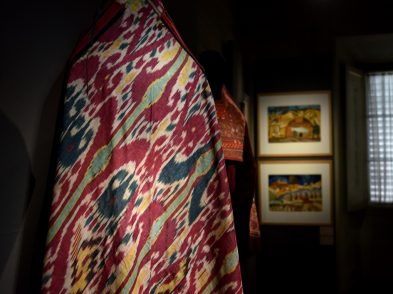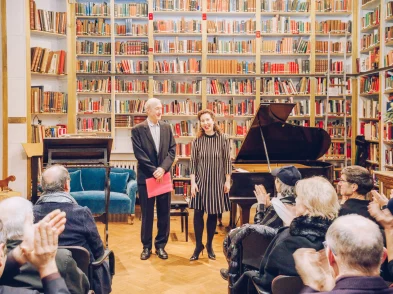‘Sculpture is the art of producing, in three dimensions, representations of natural or imagined forms. It includes sculpture in the round, which can be viewed from any direction, as well as incised relief, in which lines are carved into a flat surface’
(Dana Arnold, Art History, A Very Short Introduction)
Benvenuto Cellini’s Narcissus and Giambologna’s Mercury in the Museo Nationale del Bargello. Michangelo’s marble David in the Accademia and Donatello’s wooden Mary Magdalene in the Museo dell’Opera del Duomo. Della Robbia terracotta reliefs on many exterior walls. Marino Marini’s collection of modern sculpture. And the list goes on.
The index of famous sculptors represented in Florence is so familiar that one might not immediately notice that all are men. The process of this medium was long considered physically demanding and thus a male domain, but women also conquered this medium, creating freestanding sculptures and reliefs. In Florence, it is rare to find the work of women sculptors on public display because their sculpture, particularly recent pieces, is held in private collections.
The information about early women artists is likewise scant, and it starts around the sixteenth century. Among the few recorded women sculptors from that period, Properzia de’ Rossi (1490–1530), from Bologna, began as a miniaturist, carving on peach stones and cherry pits. Her cherry stone featuring 100 miniature heads is on display at the Pitti Palace.
Some information can be gleaned from convent records. For example, the convent of Santa Catherina de Siena, formerly in Piazza San Marco in Florence, where the nuns were very skilled craftswomen, list names and artistic activities. Suor Plautilla Nelli, prioress and mentor to other nuns, established painting and sculpture as a significant income activity. One of the few women artists mentioned by Vasari, Nelli was a painter who sometimes made devotional pieces in terracotta.
Suor Dionisia Niccolini was listed as one of Santa Catherina’s first sculptors. She specialized in terracotta devotional images. Suor Maria Angelica Razzi’s highly praised Madonna with the Sleeping Christ Child, formerly in Chiesa San Dominico in Perugia, is lost. Suor Catherine Eletta Rosselli and Suor Vincenzia Brandolini each worked in terracotta, creating nativity figures, but none of their work is known to survive.








